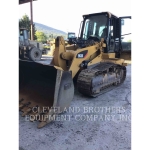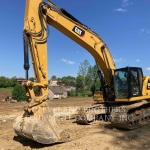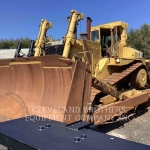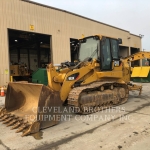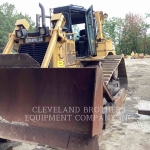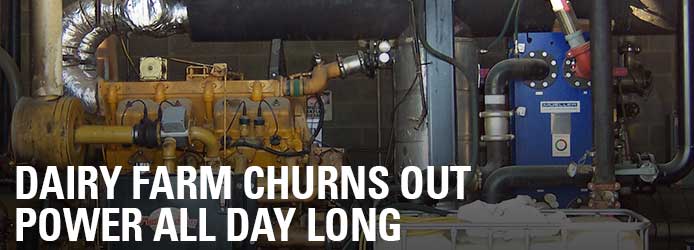DAIRY FARM CHURNS OUT POWER ALL DAY LONG
At Schrack Farms, a Cat® 232D skid steer loader scrapes manure, cleans out animal pens, loads bedding, unloads and pushes feed within reach of 1,000 Holsteins. As the line of feed gets away from the hungry mouths, the 232D pushes the feed five to six times daily. It’s all in the day of the life of a 2,300-acre dairy farm.
“We’ve got a skid loader running just about all day long,” says Jim Harbach, a partner at the historic family farm in Clinton County, PA.
Schrack Farms is firmly rooted in the past and, with a groundbreaking biogas system and support from Caterpillar and Cleveland Brothers, looking far into the future.
Eleven generations of one family have lived and worked on this farm whose homestead dates to 1773. Harbach belongs to the ninth generation, part of a team concentrating on “keeping the farm a farm.”
“The goal is never to have a sale here, to keep the farm from one generation to the next, to do what we can to survive and thrive,” says Harbach.
Generating Powerful Results with Cat Equipment
On this farm, a Cat 924H wheel loader is also at work, a Cat excavator helps build drains and structures, and a Cat 963 track loader maintains extensive dirt access roads. Still, the true workhorses are a vintage, biogas-powered Cat engine that helps create electricity and heat, and a new Cat 232D skid steer loader, sized and designed specifically for agricultural uses.
Schrack Farms bought its 232D through a money-saving Dairy Farmers of America purchasing co-op with Caterpillar. Harbach appreciates the back end that’s designed to protect the radiator – a necessity for turns in tight quarters – and the machine’s compatibility with a range of tools, such as specialized blades and bedders, for its many tasks.
“It’s very versatile,” he says. “We like being able to keep the radiator clean, the ease of maintenance, and the access to the components.”
Cleveland Brothers’ service of the farm’s Cat machines “has been great,” says Harbach. Service contracts for oil changes and testing help keep the 924H wheel loader and the new skid steer running smoothly, and “we are absolutely pleased with the service.”
One Engine. 24/7 Power.
While the 232D moves all day around the farm, just around the corner is a Cat engine working just as hard. Connected to a 200kw generator, the 1200 rpm Cat(R) G379 engine has “a 99 percent run time.The engine is pivotal to Schrack Farms’ biogas system, celebrating its 10th anniversary in 2016.
At its beginning, the system was one of about five statewide. Today, it’s among about 25, serving as a model for sustainable, cost-efficient farm operations. The system’s many tasks include:
Turning manure into fertilizer and bedding.
As Harbach explains it, the system stores manure in a lidded, underground tank known as a digester. Heated to match the cow’s body temperature, the digester promotes the same digestion process experienced in the cow’s stomach, while also producing gas that powers the engine generator set. Much of the odor is reduced, and while the biogas powers the engine, the byproducts are separated into liquids to fertilize the soil and solids to be dried for bedding.
Providing electricity.
Half of the electricity powers the entire farm while the excess is sold to the electric grid through a power purchase agreement.
Providing heat.
Captured from the Cat engine, the heat warms the barn floors, creates domestic hot water for washing pipelines and equipment, and dries the 3,000 individual towels used to prep 1,000 udders for milking three times a day.
The Caterpillar engine dates back to 1968. By keeping up with routine maintenance and completing various rebuilds every five years or so, the engine is still running stronger than ever. “You talk about dependability or reliability of Cat equipment, that speaks highly of them,” says Harbach. “It’s only down long enough to change oils and do service work, and it’s back running again.”
The entire biogas system is designed to “recycle pretty much everything we can recycle,” says Harbach. Even with operations and maintenance averaging about $20,000 a year, the system creates annual electrical savings of $100,000, plus savings on the costs of bedding and heat.
Together, all the pieces add up to a farm poised to achieve its goal of withstanding economic pressures and achieving its goal of surviving and thriving.
“Anything you can do to lower your cost of production is putting you in the position of riding the waves a little bit better,” says Harbach.
